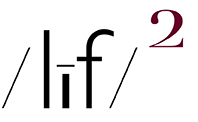(embiggenable)
(embiggenable)
(embiggenable)
(embiggenable)
(embiggenable)
“‘A photograph can be an instant of life captured for eternity that will never cease looking back at you.” ~ Brigitte Bardot
AS MENTIONED IN MY ENTRY, STREET PHOTOGRAPHY ~ a first world problem, my intention was to make a photo book-the same pictures in color and monochrome in separate groupings-to investigate the differing viewing and appreciation experience (if any) between color and monochrome versions of the same pictures.
Initially, my thought was to limit the number of pictures to 10. That was, in part, cuz, not being a street photographer, I thought that coming up with 10 good street pictures might be a stretch. As it turns out, much to my surprise, I came up 30 very good-(iMo) picture possibilities, So, my now second first-world problem is editing down the choices to 10 just pictures.
After several go-arounds I narrowed it down to 15 strong pictures. So I thought, 15 it is until…I started designing the book-each spread with a picture on one page, location caption on the facing page-at which point I realized I was creating a 66(ish) page book. While the number of pages, per se, is not an issue, the cost of such a photo book with the design and production values I want-premium paper, lay-flat pages, 6C printing-would be in the $100USD + range. Once again, the cost is not an issue for me….except….
…what I hoped to create was a book in the $30USD range in order that some of you, the blog followers, might be interested in acquiring the book. Not because I am a brilliant picture maker but, rather, to partake in the investigation, re: color v monochrome of the same pictures, of whether there is a difference in the viewing and appreciation experience.
If there is an interest, I will edit the pictures down 8 or so and make a soft-cover book with 4C instead of 6C printing. The book would be available direct from the POD printer, Blurb. If anyone is interested just hit the LIKE button. FYI, I am not looking for big numbers. 5-6 would be enough for me to make the effort. And, BTW, I would be selling the book at cost.
